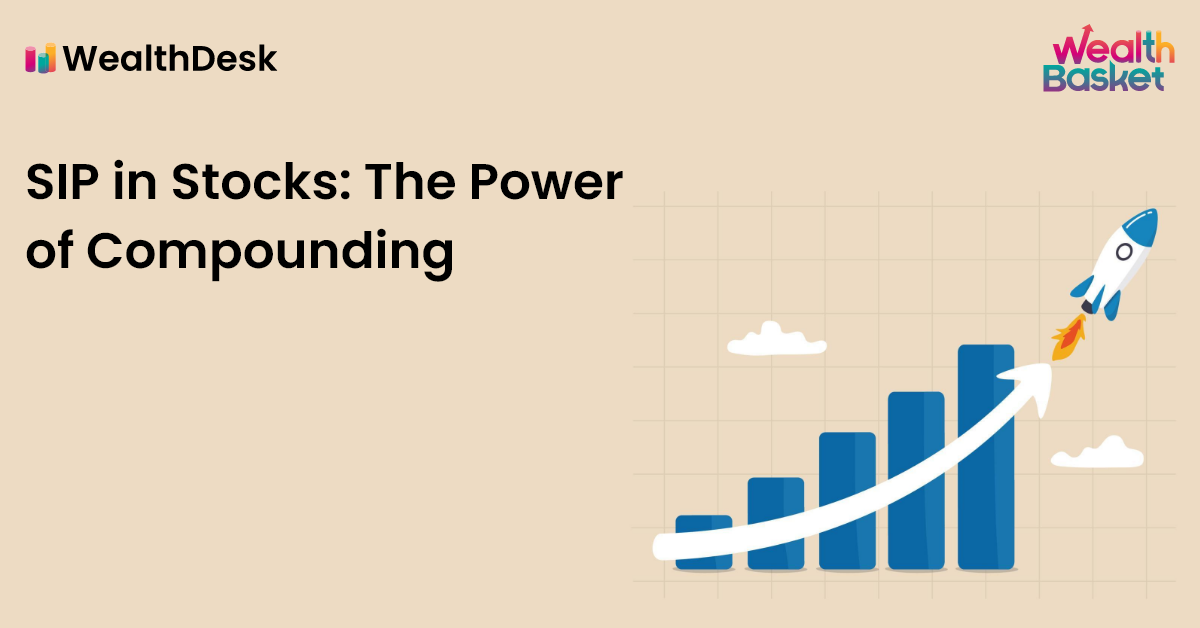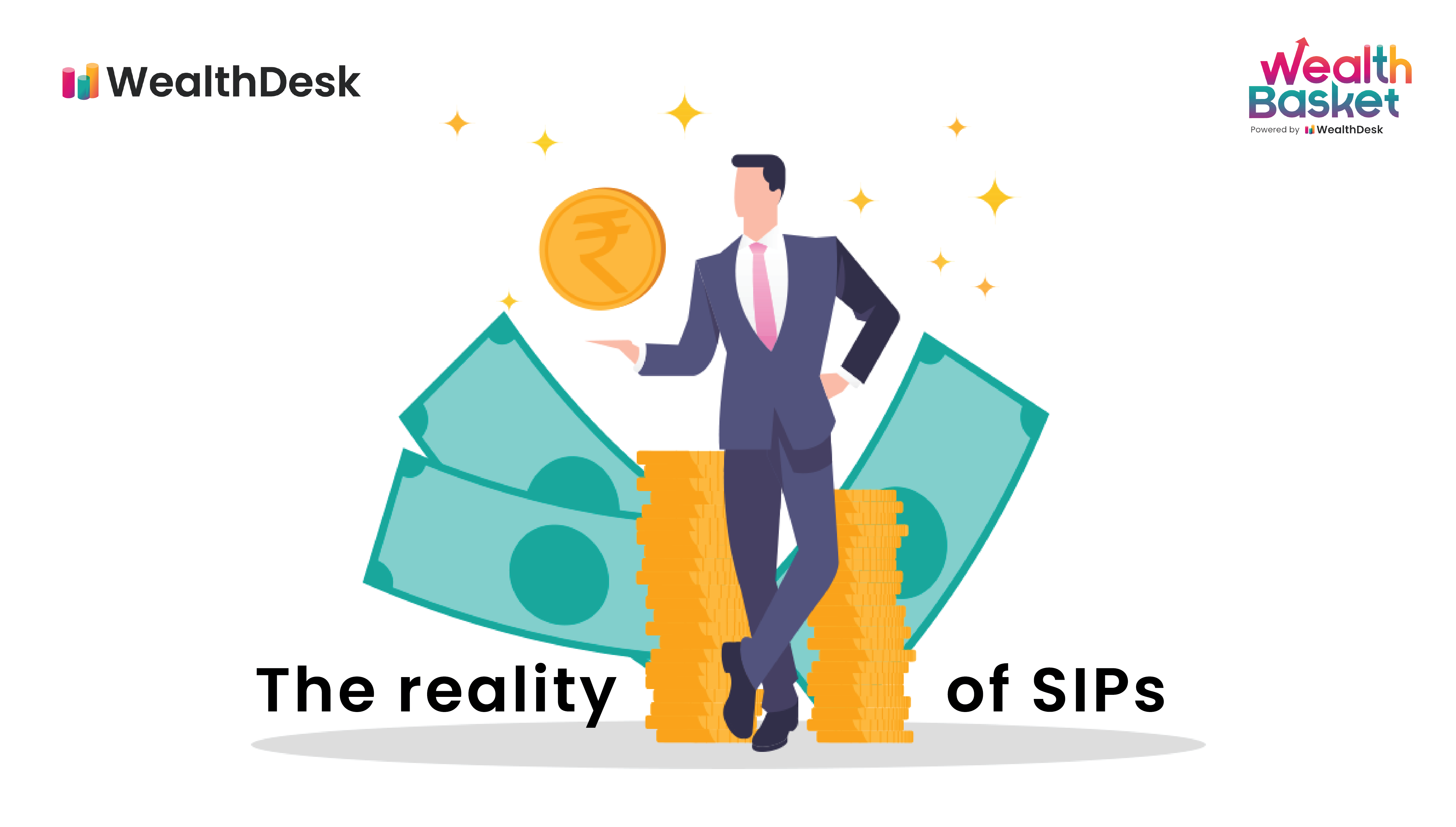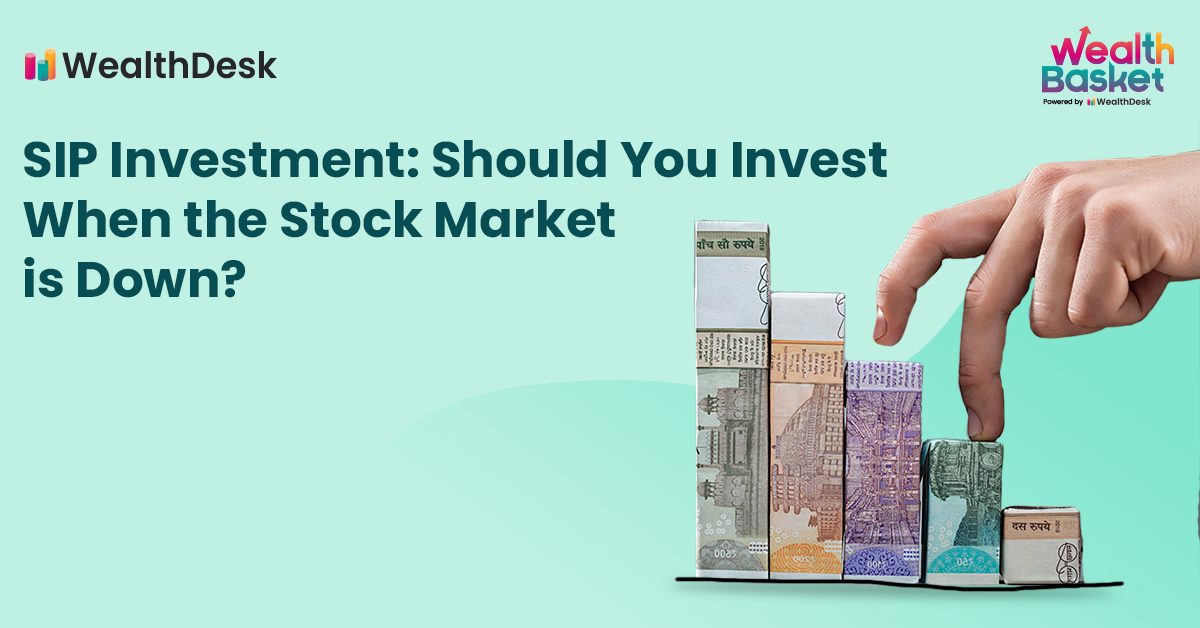Suppose you invest your money into an asset and earn some income. If you reinvest this income, you will earn an income on the original investment, and the income earned. If you keep reinvesting, you will be earning returns on the investment and all its returns. This effect of reinvesting is called compounding.
Compounding has the power to grow your wealth considerably. This article looks at the impact of compounding on SIP investments in stocks.
What is SIP?
When an investor follows the SIP model, they will invest a fixed amount periodically in the asset of their choice. This asset could be anything from stock, mutual fund, or ETF to a WealthBasket. The interval between each investment could be a week, a month or any period of the investor’s choice. SIPs allow you to invest small amounts in a disciplined manner. SIPs have the effect of reducing costs by buying more at low prices and selling at high prices.
How does SIP work?
In SIP investments, the amount to be invested remains the same regardless of the price. So when prices vary, the quantity bought will also vary.

When prices rise, the quantity bought will fall. When the price falls, the quantity bought will rise.
Thus in SIPs, an investor buys more at lows and buys less at highs. This effect is called Rupee cost averaging. SIPs have the power to reduce investment costs and sidestep errors like buying at peaks or selling at lows.
What is SIP in Stocks?
An investor can set up a SIP model for stock investments. SIPs are widely known as a method to invest in mutual funds, but they are not limited to just mutual funds. After all, SIPs are just a method of making regular and fixed investments over a certain period.
How to make SIP in stocks?
Stock SIPs are also known as DIY (do it yourself) SIPs. Depending on their periodic investment, investors must set up purchase orders for the number of shares to be bought with their broker.
What is the Compounding Effect?
When investors commit to reinvesting their returns, they will earn returns on the principal amount and the returns earned until then. This effect of reinvesting is called compounding. Compounding is often compared to the snowball effect. Over time, small actions can lead to big gains.
How Does Compound Interest Work?
Compound interest is the most well-known example of the power of compounding. If a bank account pays compound interest, the account holder will earn interest on the principal amount and the interest earned. Compound interest has the potential to quicken the growth of your savings.
Discover stocks that suit certain filter criteria and dive into details to check their WealthBaskets.
Compounding effect in share market
Compounding is not limited to bank accounts. Investors can get compounding benefits by reinvesting returns. Suppose an investor decides to reinvest the dividends earned from stocks. These dividends will now earn returns through the dividends and capital gains. The dividends received will again be reinvested for earning returns. As this cycle continues, investors would earn higher returns than those who did not reinvest.
Example of Power of Compounding in Stock SIPs
SIPs are a powerful tool for reducing the costs of investment. Through Rupee cost averaging, SIPs have the power to lower the costs incurred by an investor. On the other hand, compounding can have a snowball effect on the value of the investments.
What if these 2 were combined? SIP investments in stock markets can also benefit from compounding. This section explores the idea through an example of the power of compounding in the stock market.
Suppose you can invest ₹10,000 per month, and you decide to invest in a certain stock that pays monthly dividends of ₹10 per share.
You have the choice of reinvesting. Let’s see what your gains would look like with and without reinvesting.
With Re-Investing:
| Month | Stock Price | Shares bought through SIP | Shares eligible for the dividend | Dividend earned | Shares bought through dividends | Total shares held |
| January | 100 | 100 | 100 | 1000 | 10 | 110 |
| February | 70 | 143 | 253 | 2530 | 36 | 289 |
| March | 80 | 125 | 414 | 4140 | 51 | 465 |
| April | 90 | 111 | 576 | 5760 | 64 | 640 |
| May | 110 | 91 | 731 | 7310 | 66 | 797 |
| June | 130 | 77 | 874 | 8740 | 67 | 941 |
| July | 115 | 87 | 1028 | 10280 | 89 | 1117 |
| August | 140 | 71 | 1188 | 11880 | 84 | 1272 |
| September | 135 | 74 | 1346 | 13460 | 99 | 1445 |
| October | 130 | 77 | 1522 | 15220 | 117 | 1639 |
| November | 135 | 74 | 1713 | 17130 | 126 | 1839 |
| December | 130 | 77 | 1916 | 19160 | 147 | 2063 |
Here, you end up owning 2,063 shares which are worth ₹2,68,190. Your entire cost of investing was ₹1,20,000.
What if you had decided not to reinvest the dividends?
Without Re-Investing:
| Month | Stock Price | Shares bought | Total shares owned | Dividend earned |
| January | 100 | 100 | 100 | 1000 |
| February | 70 | 143 | 243 | 2430 |
| March | 80 | 125 | 368 | 3680 |
| April | 90 | 111 | 479 | 4790 |
| May | 110 | 91 | 570 | 5700 |
| June | 130 | 77 | 647 | 6470 |
| July | 115 | 87 | 734 | 7340 |
| August | 140 | 71 | 805 | 8050 |
| September | 135 | 74 | 879 | 8790 |
| October | 130 | 77 | 956 | 9560 |
| November | 135 | 74 | 1030 | 10300 |
| December | 130 | 77 | 1107 | 11070 |
Here, you end up owning 1,107 shares and have earned dividends of ₹79,180. So, your investments plus returns are equal to ₹2,23,090.
So we see that over just one year, in our example, you made an extra ₹45,100 due to the power of compounding. Please note that the example quoted is for a hypothetical stock that has performed well over one year.
The Takeaway
SIPs are a good strategy to minimise the cost of investing. Reinvesting of returns can lead to a snowball effect on the value of investments. When you use a combination of both SIPs and reinvesting for compounding, the benefits can be significant.
In our example, the investor could more than double their returns through this combination in just one year. It should be noted that there aren’t many stocks that may pay a dividend of ₹10 per share every month. However, the difference between reinvesting and not reinvesting was clear.
On WealthDesk, investors can find stock and ETF portfolios. These portfolios, called WealthBaskets, are made by SEBI-registered professionals. There are WealthBaskets for different themes and strategies. Some of the WealthBaskets have the option of SIP available.
FAQs
If the returns from the investment are reinvested, the SIP will also have a compounding effect. The dividends earned from the SIP would have to be reinvested for the compounding effect to kick in.
The dividends would have to be reinvested for stock investment to earn compound returns (interest is earned on debts, and returns are a better fit for stock investments). When the dividends are reinvested, the investor will earn returns on the original investment amount and their returns.
Some companies may reinvest the profits instead of distributing dividends. Thus, the profits are used for further growth of the company. Here, the compounding is not through the reinvestment of the dividends but through the reinvestment of the profits.


















